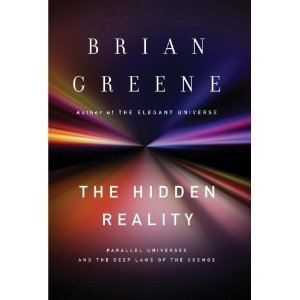Watch the interview:
| The Colbert Report | Mon - Thurs 11:30pm / 10:30c | |||
| Brian Greene | ||||
| ||||
If Greene's theory is correct, what are these parallel universes like? Beneath his satire performance, Colbert asks a really crucial question, "how do you look outside of what is to you everything?" How do we examine alternative and outside universes when we, the observers, are positioned within a set and unquestioned sense of reality? How do we glimpse to the parallel, multiple, alternative universes potentially amongst us?
This is where art comes in. Whether film, literature, photography, TV, or video games, art shows us alternative realities from our own. Through art, we experience another world, an imaginative realm where we experience another place, time, and people. The alternative universes of art range from science fiction fantasies to realist novels; all of them present another version of the world for the reader or viewer to temporarily dwell in.
Greene remarks that though math suggests these parallel universes are "a possibility," "until we have experimental evidence for these things, you can't believe it." Art may not provide the experimental evidence in the scientific tradition, but it does in its own way predict and display the possibilities and conditions of these parallel universes. Art provides humans access to the realms of dreams, the supernatural, the future, the past; it shows us reality through the lens of the imaginative, the schizophrenic, the drugged, the psychedelic, the visionary. Encountering the other worldly in art is a kind of empirical evidence. Art is a record of human experience, one that suggests that existence, like Brian Greene claims, is neither singular nor universally shared, but rather is plural, multiple, relative, and ever shifting.
In conclusion, I would love to chat with Brian Greene.


The TV show "Fringe" is based on a parallel universe interacting with ours.
ReplyDeleteI've heard about that show, but haven't watched it yet. I'll push it to the top of my list. Thanks!
ReplyDeleteFound this blog via your comment on colbertnation.com
ReplyDeleteAnyhow, I don't think art is applicable to the subject of multiple universes. And it certainly does not provide a kind of empirical evidence in any sort of meaningful way at all.
When scientists use the term 'empirical evidence', they refer to evidence which is objective, quantifiable, and tied to observation- not highfalutin speculation.
What may art provide is a purely subjective insight into the artist's conception of multiple universes and the like- it has no bearing on the nature of reality itself.
Just sayin'.
@JD In literature, film, TV, music, photography, video games, we see artists creating and depicting alternative realities. Audiences and readers not only observe these alternative realities, but emotionally and cognitively live through them. Take for instance, while watching a movie like Avatar, audiences report emotional responses to the reality on screen. We feel a range of human emotions while in this aesthetic space. I believe this is observable phenomenon. As to objective, I am of the belief that all human knowledge, even scientific and mathematical, is inherently culturally and historically relative and perspective based.
ReplyDeleteHowever, taking your comment into consideration, I do want slightly to revise my claim that art provides empirical evidence for parallel universes. I was not claiming that art proves Greene's theories. Rather, I believe that through the study of alternative realities in art, an aesthetically lived human reality, we can look at the theory of multiple universes from a different angle. The vast array of alternative realities in art shows how humans have imagined and even observed these alternative realities.
Lastly, I believe that art shapes our very conception of reality. We learn what is culturally constructed as real through culture, through the representations of reality found in the arts.